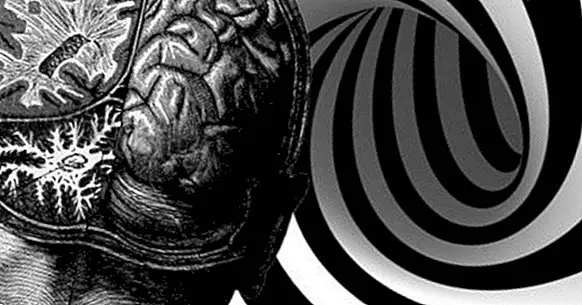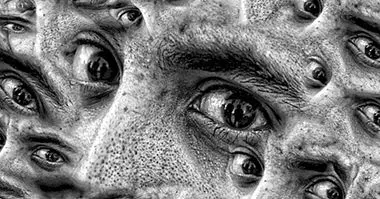The 6 types of schizophrenia (and associated characteristics)
Schizophrenia is a group of serious psychiatric disorders that, contrary to what many people believe, do not have to resemble each other.
The types of schizophrenia are what have long served to determine the mental health of patients who present symptoms Although knowing how to recognize and distinguish them is not easy.
In addition, the debate about whether it is more necessary to differentiate between types of schizophrenia or on the contrary, the phenomenon of schizophrenia must be addressed has globally caused the question of the appropriate use of different subtypes based on separate diagnostic criteria to be questioned.
Subtypes of schizophrenia or schizophrenia to dry?
From the discussion about whether to consider types of schizophrenia or talk about schizophrenia in general has had an important consequence: recently, the diagnostic manual DSM-V has stopped differentiating according to subtypes of schizophrenia, although that does not mean that this decision has received good levels of acceptance by psychiatrists in general.
Summarizing, it is not clear if there is a distinction or not between types of schizophrenia , but many specialists in the medical field continue to do so. Depending on the categorization of the symptoms and the emphasis placed on the variations and different ways in which schizophrenia can appear, a single concept will be used to explain all cases of this disease or different labels will be used to specify more: There is an objective criterion that allows us to resolve this issue.
As knowledge is power, here you can find a description of the characteristics of the types of schizophrenia that have been excluded from the DSM in recent years.
1. Catatonic schizophrenia
This type of schizophrenia is characterized by serious psychomotor alterations that the patient presents . These pathological changes are not always the same, although the main ones are immobility and waxy stiffness, in which the person keeps the muscles tense so that it looks like a wax figure (hence the name of the symptom), the inability to speak and the adoption of strange postures while standing or on the floor.
During the phases in which catatonia occurs, there are also alterations in consciousness and other alterations such as mutism, stupor and stare, alternating these negative symptoms with others such as agitation. However, it must be borne in mind that there can be a lot of variability in the way in which catatonic schizophrenia occurs, and most patients do not present all the symptoms associated with this at the same time .
Finally, it is necessary to point out that in addition to the discussion about whether there are types of schizophrenia or a single clinical entity expressed in different ways, there is a debate about whether catatonia is in fact one of the manifestations of schizophrenia or if it is another independent phenomenon.
2. Paranoid schizophrenia
One of the best known types of schizophrenia, in this case the symptoms tend to be more psychic than motor ; In fact, people with this kind of schizophrenia have no impairments in motor or speech ability. Among these signs of alteration in psychic functions is the persecutory mania, that is, the belief that other people have want to harm us in the present or in the future.
It is also frequent that auditory hallucinations and delusions occur in this type of schizophrenia (in the latter, no strange elements are perceived through the senses, but the thought is so altered that strange narratives are constructed about reality).
The delusions of grandeur, classics of the megalomaniac people, can also make their appearance here.
3. Simple schizophrenia
This has been a category to designate a possible type of schizophrenia in which there are not as many positive symptoms (that is, those that define the proactive behavior and the initiatives of the person) and negative symptoms (that is, characterized by the absence of basic psychological processes and the lack of will and motivation). In other words, this type of schizophrenia is characterized by mental processes that are diminished, and not so much by the unusual excesses of mental activity.
People who presented this type of schizophrenia had many forms of inhibition, affective flattening, little verbal and non-verbal communication, etc.
Unlike the other types of schizophrenia that we will see here, this did not appear in the DSM-IV, but has been a category proposed by the WHO .
4. Residual schizophrenia
This category was used as a type of schizophrenia that occurs when in the past there has been an outbreak of schizophrenia but in the present the positive symptoms are very moderate and of low intensity, while what most calls attention are the "remains" of negative symptoms that have remained. Therefore, to understand this type of schizophrenia it is very important to take into account the time factor and make comparisons between before and after.
5. Disorganized or hebephrenic schizophrenia
In this type of schizophrenia, rather than existing behaviors that in themselves are a sign of pathology (such as adopting a totally rigid posture), the illness is expressed through the way in which the actions of the person are organized and succeeded . That is to say, that its main characteristic is the disordered way in which the actions appear, in comparison with the rest.
Its behavior is chaotic and is not organized around themes that are maintained over time, that is to say that a more or less coherent narrative is not constructed that gives rise to the persecutory mania or the hallucinations that are had, for example. The person shows disorganization in their emotional states, in what they say and / or in their way of moving.
6. Undifferentiated schizophrenia
This is a category "tailor-made" to classify those cases that do not fit the diagnostic criteria of the other types of schizophrenia. Therefore, it can not be considered a type of consistent schizophrenia.
Bibliographic references:
- Fink, M., Shorter, E., and Taylor, M. a. (2011). Catatonia is not schizophrenia: Kraepelin's error and the need to recognize catatonia as an independent syndrome in medical nomenclature. Schizophrenia Bulletin, 36 (2), pp. 314-320.
- Jansson L.B., Parnas J. (2007). Competing definitions of schizophrenia: what can be learned from polydiagnostic studies ?. Schizophrenia Bulletin 33 (5): pp. 1178-200.
- Wilson, M. (1993). «DSM-III and the transformation of American psychiatry: a history». American Journal of Psychiatry 150 (3): pp. 399 - 410.



















